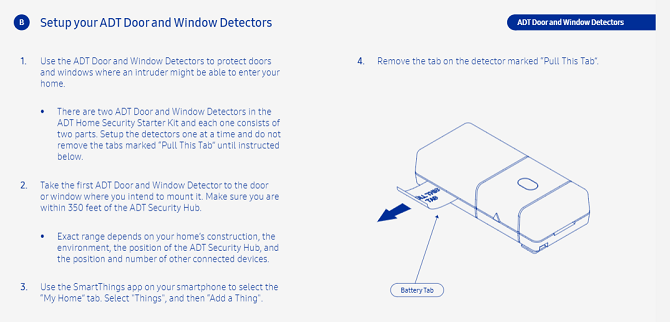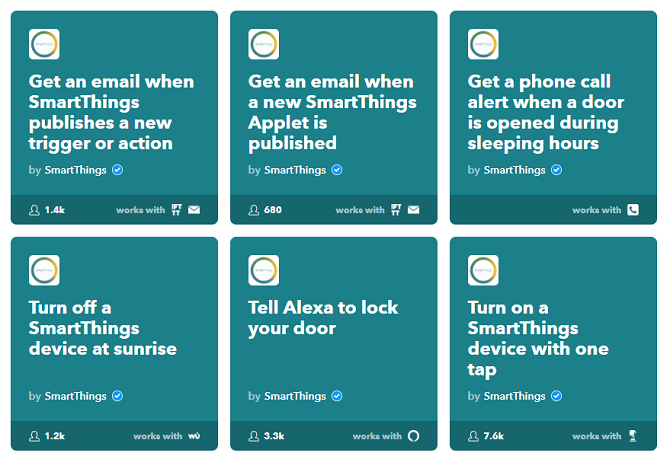Using smart devices around your home should make your life better. Once you spend some time setting them up, they can save you time, energy, and money.
Sadly, technology is rarely so simple. Things are always going wrong. And if it takes you longer to fix your smart home device than it would to perform a given task manually, the device quickly starts to lose its allure.
If your Samsung SmartThings setup is giving you grief, what are your options? In this article, we'll offer some common troubleshooting tips and look at alternatives you could use instead.
Basic SmartThings Troubleshooting
Here are three of the most common issues you'll encounter when using SmartThings devices.
1. Failed Device Pairings
Samsung SmartThings is a modular system. You can keep adding more devices over time.
Some users have complained about their new devices not pairing with their existing hub. The four affected products are the Multipurpose Sensor, the Motion Sensor, the Arrival Sensor, and the Water Leak Sensor
A defective Remove to Pair pull-tab is often the cause of the issue.
It's easy to know if you can tell if you have a defective pull-tab. Your device's LED won't light up and pairing will be impossible. The issue is especially common if the tab ripped when you removed it for the first time.
To fix the problem, you need to remove the device's cover. Once exposed, remove the battery and blow on both the battery and the device's battery compartment. Your aim is to remove any remnant parts of the tab.
2. Poor Sensor Range
SmartThings devices talk to each other wirelessly. As such, they are often afflicted by a weak signal.
A weak signal could cause a device to unreachable for extended periods. And in the case of a water leak or intruder, a disconnected device could prove to be very costly.
You can, however, tweak your set up to improve the situation.
Firstly, try to make a device's line-of-sight as clear as possible. Wireless signals struggle to pass through thick walls.
If that doesn't help, try adding a socket midway between your hub and the troublesome device. Because SmartThings uses a mesh network, a socket will function as a signal repeater.
You can also try disabling 2.4GHz Wi-Fi. It will reduce congestion on the frequency and thus improve your devices' range.
Lastly, you could try replacing your problematic device with a Z-Wave alternative. Z-Wave operates at 900MHz. It's not a widely-used frequency among other household items.
3. Unknown Devices
When you try and add a new device to your SmartThings setup, occasionally you will see an Unknown Device message.
Typically, the message is caused by one of two things:
- You're using a Z-Wave device that was previously connected to a different SmartThings Hub or Z-Wave controller. You need to reset the device. Refer to the manufacturer's official documentation for more information.
- The device is blacklisted. Samsung SmartThings blacklists some Zigbee devices which have known compatibility issues. Examples include smart door locks from Kwikset and Yale. There is no fix for the incompatibility; you may experience unexpected behavior.
Time to Move On From SmartThings?
If your SmartThings issues run deeper, it might be time to accept that it's time to move on. Samsung SmartThings is not the only way to automate your home.
Here are some alternatives.
Replace Your Hub
Many of the leading smart home manufacturers offer a hub. Alongside SmartThings, other common products include the Insteon Hub, the VeraLite hub, and the Lutron Smart Bridge. We've looked at them all in detail elsewhere on the site.
You could even try using openHAB. Whereas as most other company's products either use proprietary communication protocols or one of Zigbee and Z-Wave, openHAB is hardware- and protocol-agnostic.
In that regard, openHAB is the most like-for-like replacement for SmartThings (SmartThings hubs use Zigbee but also have a Z-Wave radio).
On the downside, openHAB is much less user-friendly than SmartThings. You need to be fairly knowledgeable with code to make it fulfill its potential.
It's also worth spending some time researching less well-known hubs. Some hubs you've probably never heard of have exceptional features. Securifi's range of products is particularly impressive.
Try a Smart Assistant
Whether a smart assistant can replace your SmartThings smart home depends on how complicated your setup is.
If you use lots of third-party SmartThings apps, you might find a smart assistant to be lacking. But if your hub just runs a few smart lights and a security camera, you might be able to remove the hub from the equation.
Most modern smart home devices can talk to each other (and consequently, to your virtual assistant) over the existing Wi-Fi network---they don't solely rely on Zigbee or Z-Wave. It's why we recently argued that hubs were slowly becoming obsolete in the world of smart homes.
Of course, if you have a lot of older Z-Wave devices, you will need to retain a Z-Wave-compatible hub.
Fire Up IFTTT
The final major selling point of a SmartThings Hub is its ability to automate events.
For example, if a motion sensor detects a door being opened, it could tell your smart lighting system to turn on the light, even if neither of the two systems are manufactured by Samsung.
But, as long as the devices you want to talk to each other are both running on your Wi-Fi network, the free IFTTT app can do the same thing.
We've looked extensively at IFTTT recipes for both SmartThings and the wider smart home. Check out the articles to get a taste of what's available. You might also consider some budget DIY projects to build up your smart home.
Image Credit: leungchopan/Depositphotos



